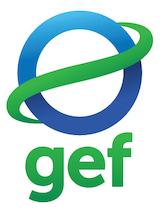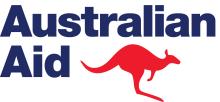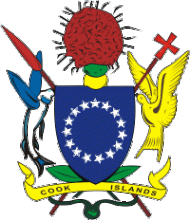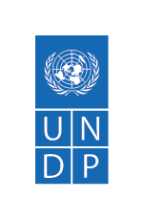PACC Cook Islands
PACC COOK ISLANDS- Strengthening the design and implementation of the Mangaia Harbor and managing the island’s entire coastline
In the Cook Islands, the PACC project focused on coastal management on Mangaia Island, especially on climate proofing its harbour. The southernmost point of the 15 islands that comprise the Cook Islands, Mangaia has lacked a harbour since it was destroyed by tropical cyclones in early 2005. Communities in the Cook Islands depend on such harbours for the transportation of essential supplies.
In response, PACC Cook Island project worked to restore and strengthen the existing harbour. PACC CI also incorporated current and future climate change impacts to make the harbour stronger and better able to withstand future cyclones and storms.
PACC CI focused on providing concrete adaptation approaches for communities living along the coastline, through developing an island level coastal management policy, incorporating climate risks and resilience considerations.
For more information on the 13 additional participating countries and the overall PACC Programme, click here.
Project details
Levels of intervention
- Community
Source of funds
- Bilateral Finance
Key implementers
- Local Governments
- National Governments
Funding amounts
Project partners
- PACC
- Central Policy and Planning Unit, Office of the PM, Cook Islands
- United Nations Development Programme (UNDP)
- Global Environment Facility (GEF)
- SPREP
- Australian Government
Introduction
PACC COOK ISLANDS- Strengthening the design and implementation of the Mangaia Harbor and managing the island’s entire coastline
In the Cook Islands, the PACC project focused on coastal management on Mangaia Island, especially on climate proofing its harbour. The southernmost point of the 15 islands that comprise the Cook Islands, Mangaia has lacked a harbour since it was destroyed by tropical cyclones in early 2005. Communities in the Cook Islands depend on such harbours for the transportation of essential supplies.
In response, PACC Cook Island project worked to restore and strengthen the existing harbour. PACC CI also incorporated current and future climate change impacts to make the harbour stronger and better able to withstand future cyclones and storms.
PACC CI focused on providing concrete adaptation approaches for communities living along the coastline, through developing an island level coastal management policy, incorporating climate risks and resilience considerations.
For more information on the 13 additional participating countries and the overall PACC Programme, click here.






Project details
Small island developing states [SIDS], including the Cook Islands, are highly vulnerable to climate change and sea level rise due to their small land masses and ocean surroundings. SIDS are also highly prone to natural disasters such as tropical cyclones. Many coastal communities and their socio-economic infrastructure and activities face serious coastal erosion problems caused by storm surges and coastal flooding relating to tropical cyclones.
In addition to sea-level rises and strong winds, the following climate conditions are considered to be potential sources of risk:
- Extreme rainfall events;
- Droughts; and
- Extreme high air temperatures
Early adaptation measures emphasized protecting land through ‘hard’ shore protection initiatives, instead of accommodating sea-level rise; however, the latter is increasingly garnering attention. In the Cook Islands, the focus has been on cyclone recovery, reconstruction, and disaster management. Building on these efforts, PACC CI is working to systematise a long-term adaptive approach.
- Community
- Local Governments
- National Governments
Local communities on Mangaia Island
- PACC
- Central Policy and Planning Unit, Office of the PM, Cook Islands
- United Nations Development Programme (UNDP)
- Global Environment Facility (GEF)
- SPREP
- Australian Government
News
Key results & output
The first of the PACC outcomes is devoted to mainstreaming. The PACC approach to mainstreaming has a dual purpose: 1) to strengthen the ability of institutional frameworks, policies and plans to take climate change risks into consideration and 2) to improve the capacity of key national government and community decision-makers to integrate adaptation measures in key decisions.
The second PACC outcome is to design and demonstrate innovative decision systems, approaches, technologies and practical measures to improve climate-resilience.
The third outcome, Technical Support and Communication, is to ensure that results and lessons from the PACC project are shared regionally and globally. The goal is also to bring together new knowledge generated through the project as the basis for a strategic regional approach to climate change adaptation among Pacific Island Countries and Territories.
Key Results
- National adaptive capacity developed
- Community vulnerability to climate change reduced
- Technical assistance & Regional Cooperation
Outputs
- 1.1 Technical capacity of key decision makers developed
- 1.2 Institutional coordination mechanisms established
- 1.3 Tools to assess economic costs of adaptation developed and utilized
- 1.4 Legislative and policy directives prepared and adopted
Reports & publications
Videos & multimedia
Newsfeed
Contacts
- Ministry of Infrastructure & PlanningMr Keutekarakia MataroaExecutive Officer
- Ministry of Infrastructure & PlanningVaipo MataoraPACC National Coordinator
- SPREPTaito NakalevuPACC Regional Project Manager
- UNDPMarta MoneoUNDP Environment Programme Officer
- UNDPGabor VerecziUNDP Regional Technical Advisor

